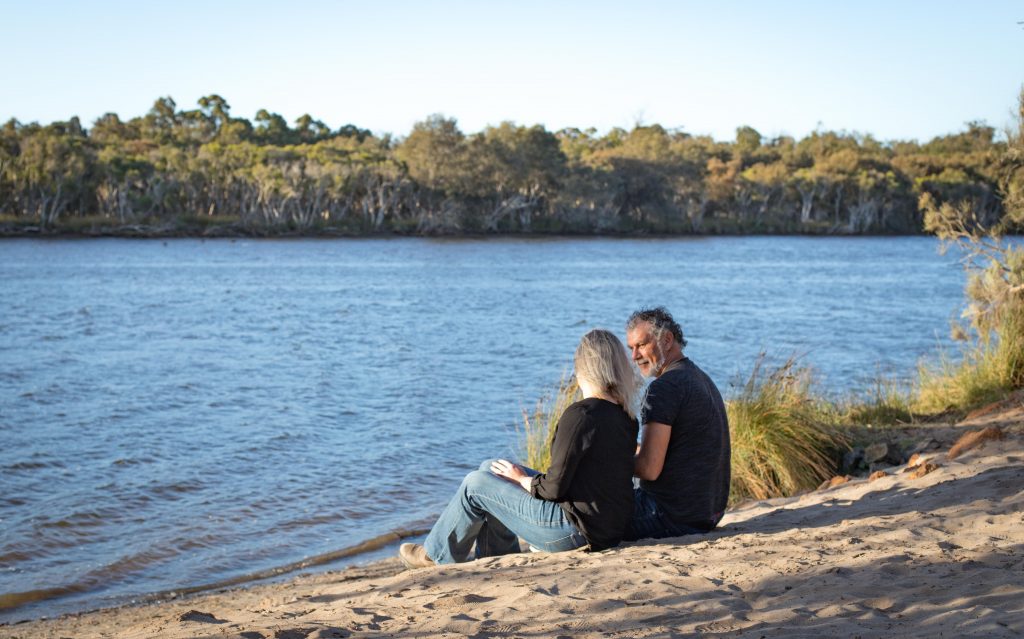The second summer, or the season of adolescence
Bunuru falls roughly over the February-March calendar period and is the hottest time of the year in Nyungar boodja (country), with little to no rain. Hot easterly winds continue, with a cooling sea breeze most afternoons if you’re close to the coast.
And this season is no exception. It’s certainly heating up!
This makes Bunuru a great time for living and fishing by the coast, rivers and estuaries. Freshwater foods and seafood traditionally made up major parts of the Nyungar diet during this time of year and still do today. Our moort (family) is never far from the Ngarngungudditj Walgu (Collie River) or the wardan (ocean) at the moment, swimming, spending time together, fishing and gathering.
Bunuru is also a time of the white flowers, with lots of white flowering gums in full bloom, including jarrah, marri and the tuart. Nectar feeding birds, insects and mammals just love the marri blossom in particular.
Another key indictor of the onset of Bunuru is the female djirijit or zamia palm (Macrozamia riedlei). It’s much larger than the male of the species and huge, pineapple-like cones emerge from the centre of the plant.
As the hot, dry weather continues the flesh around the seeds (called bayu) change colour from green to bright red, indicating they’re ripening and becoming more attractive to animals, particularly the emu, that can handle the toxins within. Traditionally, this is also the time that they were collected by Nyungar women, for lengthy processing prior to eating to leach out these toxins.
Masses of a fine, cotton-like substance called kundyl also shows around the base of the plant, which has its own very specialised use for Nyungar people.
Keep an eye out for these and other changes in the cultural landscape and you will see what we mean!



